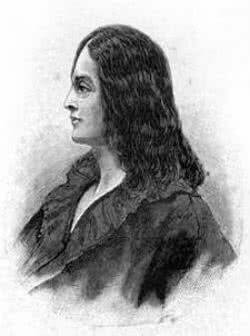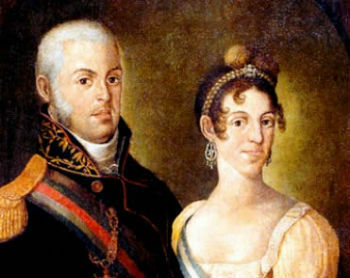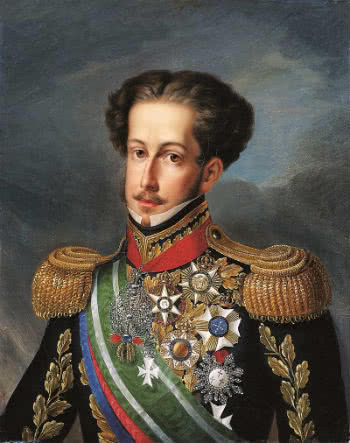Thomas Edison, known as the "Wizard of Menlo Park", was a American inventor, scientist and entrepreneur.
He played a leading role in the 20th century's technological revolution. One of his main inventions was the creation of the incandescent electric lamp.
Biography
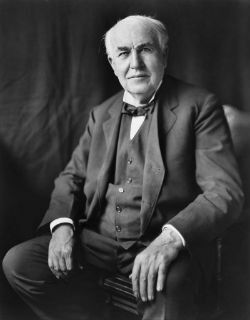
Thomas Alva Edison was born on February 11, 1847 in Milan, Ohio, United States.
Youngest son of Samuel Edison and Nancy Eliot Edison, he had some learning problems since he was little.
He studied at the Port Huron School, however, drops out of college after three months. His mother, a former teacher, starts teaching him at home.
From there, he began to read many books and subjects of interest to him and even set up a small chemistry laboratory in the attic of the house.
As a teenager, he worked as a street vendor at the train station. He took a course as a telegraph operator and even built handcrafted telegraphs. Also, at that time he learned the Morse code.
His first invention took place in 1868: an automatic vote counter. He even patented it, but was not successful among the public.
In 1869, at the age of 22, he went to live in New York without any money. In order to become a great inventor, he worked on creating an automatic stock exchange quote indicator.
His invention made him a lot of money, which had been sold for $40,000.
In 1871 Edison married Mary Stilwell, who was his servant at the Western Union. With her they had three children and they lived together for about 12 years, until Mary was stricken with typhoid fever and died.
Later, he married Mina Miller, and with her he also had three children.
Edison invented several objects, the most prominent of which was the incandescent lamp with a charcoal filament, created in 1879. He managed to make the object stay lit for 48 hours.
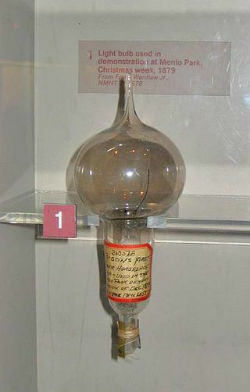 Thomas Edison's first successful lamp model, used in public demonstration at Menlo Park, 1879
Thomas Edison's first successful lamp model, used in public demonstration at Menlo Park, 1879
In addition to the incandescent lamp, the phonograph was one of his main inventions, created two years earlier, in 1877. The device recorded and reproduced sounds through a cylinder.
In 1880, Edison performed the first test of his electric railroad in Menlo Park, USA.
In addition to creations, he perfected other objects, such as the typewriter and the telephone. The charcoal microphone resulted in improved phone calls, which allowed voice transmission over long distances.
He also contributed to film development by creating film cameras called the Cinescope (or Kinethoscope) and the Vitascope. The first is a box with filmed images seen inside; and the second represents an on-screen movie projector.
Thus, Edison came to produce some silent and sound films.
In 1888, he founded the “Edison General Electric”, dominating the electricity business in the United States. One of your employees was Henry Ford.In 1901, Edison presented a more efficient and ecological solution, when he proposed nickel-iron car batteries. The intention was to replace batteries made with lead.
Thomas died at the age of 84 in New Jersey, in the city of West Orange, on October 18, 1931.
inventions
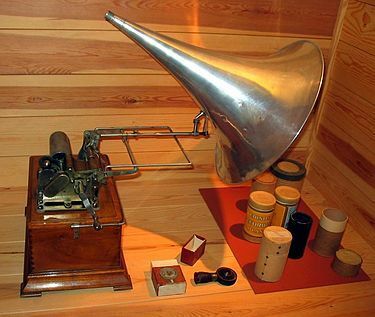 Thomas Edison Phonograph
Thomas Edison Phonograph
Thomas Edison was an accomplished inventor who registered about 2330 patents, of which 424 were on the electricity. His main inventions were:
- Electrographic Vote Recorder
- Phonograph
- Incandescent lamp
- carbon microphone
- Electric Stencil Pen
- Kinescope (Kinetoscope)
- Dictaphone
- high power dynamo
- electric car battery
- electricity meter
- electromagnetic railway
- rubber wheels
- Vacuum packaging
Sentences
- “A genius is made with one percent inspiration and ninety-nine percent effort.”
- “Our biggest weakness is giving up. The surest way to win is to try one more time.”
- “I learned a lot more from my mistakes than from my successes.”
- “Restlessness and discontent are the first necessities of progress.”
- “An experience is never a failure because it always demonstrates something.”
- “5% of people think. 10% of people think they think. The other 85% would rather die than think.”

